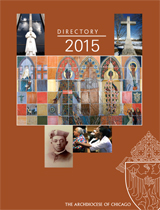July 20, 2008
Humanae Vitae 40 years later Pope Paul VI’s historic encyclical declared contraception immoral
Suggested reading
- “Humanae Vitae,” by Pope Paul VI,
Pauline Books and Media, $1.98 - “Evangelium Vitae,” by Pope John
Paul II, Pauline Books and Media, $6.95 - “Why Humanae Vitae Was Right: A
Reader,” by Janet Smith, Ignatius Press,
$27.95 - “Humanae Vitae: A Generation
Later,” by Janet Smith, Catholic
University of America Press, $24.95 - “Catholic Sexual Ethics: A Summary,
Explanation, & Defense,” by Ronald
Lawler, Joseph M. Boyle and William E.
May, Our Sunday Visitor, $24.95 - “Man and Woman He Created Them:
A Theology Of The Body,” by Pope
John Paul II, Pauline Books and Media,
$29.95
Certainly the older generations remember the vivid reactions, all around the world not only in secular circles, but also among Catholics, evoked by the encyclical by Pope Paul VI on moral values with regard to transmitting human life, titled Humanae Vitae.
July 25 marks 40 years since it was published. The occasion was the reason for Pope Benedict XVI to confirm the encyclical’s relevance in today’s world during a special international scientific congress, titled “Custodians and Advocates of Life,” held at the Pontifical Lateran University in Rome, in May.
From the very beginning, before it was even composed, the encyclical was controversial, not only in the secular world, but also among some of the experts and theologians, who were supposed to provide support for its scientific base. The pope mentioned this in the beginning of the document when he said that in March 1963, his predecessor John XXIII established a special commission of experts who could not reach an agreement concerning the moral norms proposed. This occurred especially because certain approaches and criteria for a solution to this question had emerged which were at variance with the moral doctrine on marriage constantly taught by the Magisterium of the Church (HV 6).
Indeed, when we look at the history and creation of Humanae Vitae, we can see it was a difficult undertaking from its inception. It was created against a broader background as a form of counteracting the increasing practice of contraceptives officially approved by the Anglican Church during the Lambeth conference in 1930, and later approved by other Protestant communities. That same year, Pope Pius XI issued a response to this in the form of the encyclical Casti Connubbi – the first doctrinal document in the church’s history devoted entirely to the issue of marriage, in which he emphasized that “any use whatsoever of matrimony exercised in such a way that the act is deliberately frustrated in its natural power to generate life is an offense against the law of God and of nature, and those who indulge in such are branded with the guilt of a grave sin.”
His successor, Pope Pius XII, in his famous address to midwives in 1951 said that the only morally acceptable method for avoiding conception is for the husband and wife to use the infertile period (the so-called natural birth control). In the period of reforms brought about by the Second Vatican Council (1962-1965) the issue of contraception reappeared, this time in connection with the invention of the contraceptive pill. Pope John XXIII established the above mentioned commission of theological experts (1963), which after his death, Pope Paul VI complemented with additional specialists from the fields of medicine, sociology and demography and also invited some married couples.
In general, the council stood for natural birth control in conjugal love referring to some objective standards that took into account human nature and its acts (Gaudium et spes, 51). The objective standards, however, were not defined precisely. The endnote only mentioned that the pope himself would further investigate the question of family planning. The later encyclical Humanae Vitae was supposed to be the answer of the Holy See to the question.
It turned out to be an evasion by the pope, who did not want to stall the council’s work on the matter, since the issue of admitting contraception in conjugal life started to divide the members of the special panel appointed by the church to evaluate the work of the commission. Out of 16 bishops discussing the issue, nine voted for the use of contraceptives and did not regard it as morally evil. Three bishops abstained from voting. A “majority report” signed by 19 theologians, members of the commission argued the need for introducing the use of contraceptives into the moral teachings of the church.
Although not present during the deliberations for political reasons, Cardinal Karol Wojtyla, later Pope John Paul II, was among the opponents of contraception, besides members of the Roman Curia. His impact on preparation of the encyclical Humanae Vitae was significant, if not instrumental.
Years later, Father Andrzej Bardecki a member of a special commission established by Cardinal Wojtyla in Krakow, Poland, to draft the encyclical, claimed that 60 percent of the encyclical used a memorandum written in Krakow. The document by Pope Paul VI was carefully drafted and presented as the official position of the Catholic Church on the question of the moral way of transmitting human life.
According to the papal document, moral transmission of human life can only take place as a result of conjugal love, which itself reflects the order of God’s love.
“Husband and wife, through their mutual gift of themselves, which is specific and exclusive to them alone, develop that union of two persons in which they perfect one another, cooperation with God in the generation and rearing of new lives” (HV 8). This love is above all fully human, a union of sense and spirit; it is total—that very special form of personal friendship in which husband and wife do not think solely of their own convenience; it is also faithful and exclusive of all other, and this until death; possible by means of God’s grace; finally this love is fecund, i.e. it contrives to go beyond this to bring new life into being” (HV 9).
This understanding of love is tied to responsible parenthood, which requires that husband and wife be properly aware and respectful of their respective biological functions of procreation, control their drives and emotions through reason and will, recognize the accompanying conditions which would allow them to prudently and generously decide to accept a child, or, for serious reasons, avoid having more children (HV 10).
The love of husband and wife is expressed in a sexual act, which is morally “noble and worthy” even if “for reasons independent of their will, it is foreseen to be infertile. For its natural adaptation to the expression and strengthening of the union of husband and wife is not thereby surpassed.” The fact is, as experience shows, new life is not the result of each and every act of sexual intercourse, since there are natural intervals between successive births, i.e. periods of infertility. The church then teaches that each marital act must retain its intrinsic relationship to the procreation of human life, even if it is known to be infertile, since it comes in the infertile period (HV 11.16).
This is what the church calls “natural birth control” which takes into account the responsible parenthood of the husband and wife in planning their children or avoiding having more. This position preserves the basic natural design of marital act: its unity and parenthood as an expression of mutual and true love between husband and wife. Whoever uses the sexual act and deprives it of its meaning and purpose, is equally repugnant to the nature of man and woman, and is consequently in opposition to the plan of God and his holy will (HV 12-13). Therefore all other ways of preventing conception are immoral: abortion, sterilization, contraception in all its forms (HV 14-15).
Further on, the pope reveals dangerous consequences of using artificial methods of contraception: gateway to marital infidelity, general decline of moral standards and acquiescence of authorities, which justifies the process (HV 17). Finally the pope gives pastoral directives for each and every social group to promote the church’s position as described in the encyclical (HV 19-31).
The pope was aware that the encyclical would not be easily accepted and would meet with opposition in the world (HV 18), even more so, since it was not fully acceptable to some members of the church hierarchy in the process of its drafting. This turned out to be true.
Years later, we can see how prophetic were the words of Paul VI warning of moral deterioration of society, which we can witness today. This is why, 40 years later, the position of the church remains the same. During the Conference, Pope Benedict XVI said that Humanae Vitae is not easy, yet it preserves the fundamental structure through which human life was transmitted since the beginning of the world, respectful of nature and according to its laws.
Father Gron is a moral theolgian and on staff for Chicago Katolk.
 Catholic
New World - Newspaper for the Archdiocese of Chicago
Catholic
New World - Newspaper for the Archdiocese of Chicago Archdiocese of Chicago Directory
Archdiocese of Chicago Directory Oficjalne wydawnictwo Archidiecezji Chicago w języku polskim
Oficjalne wydawnictwo Archidiecezji Chicago w języku polskim